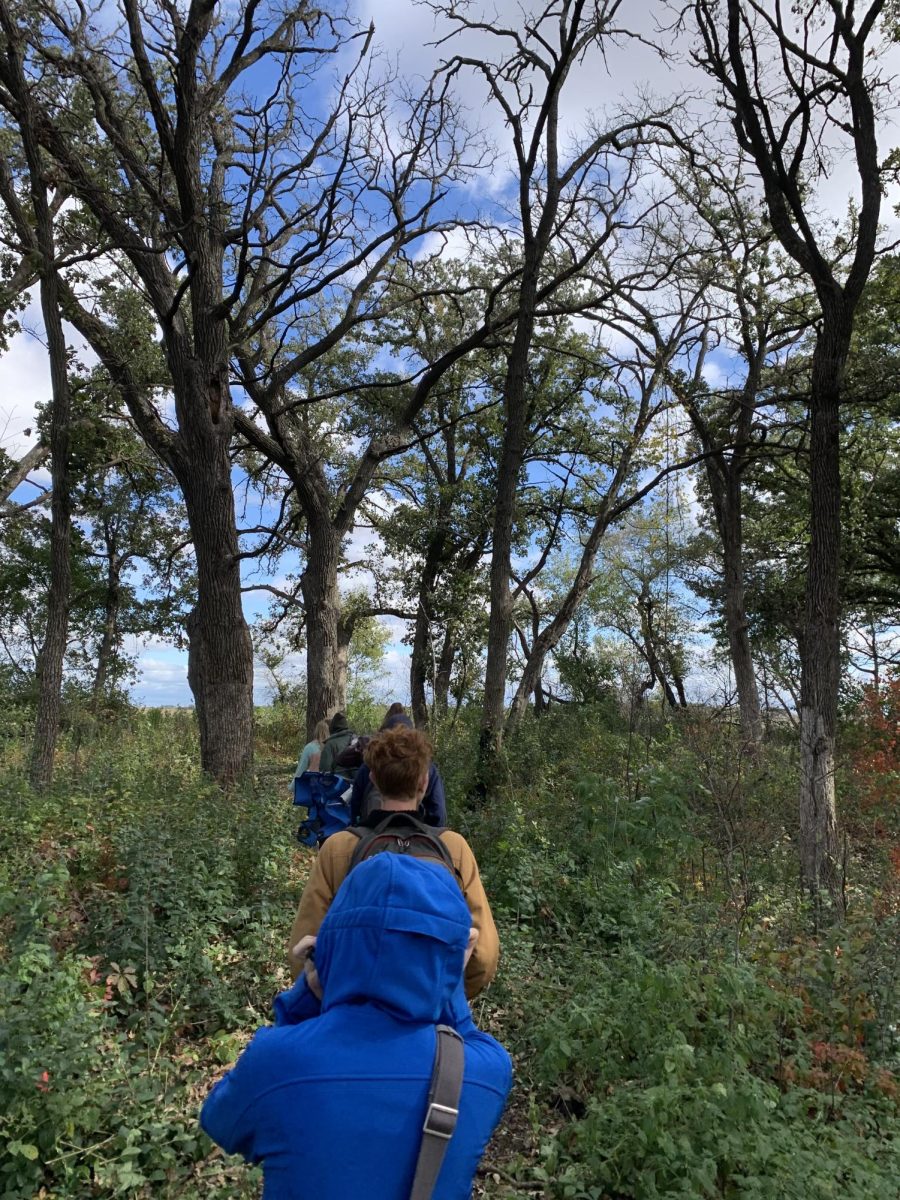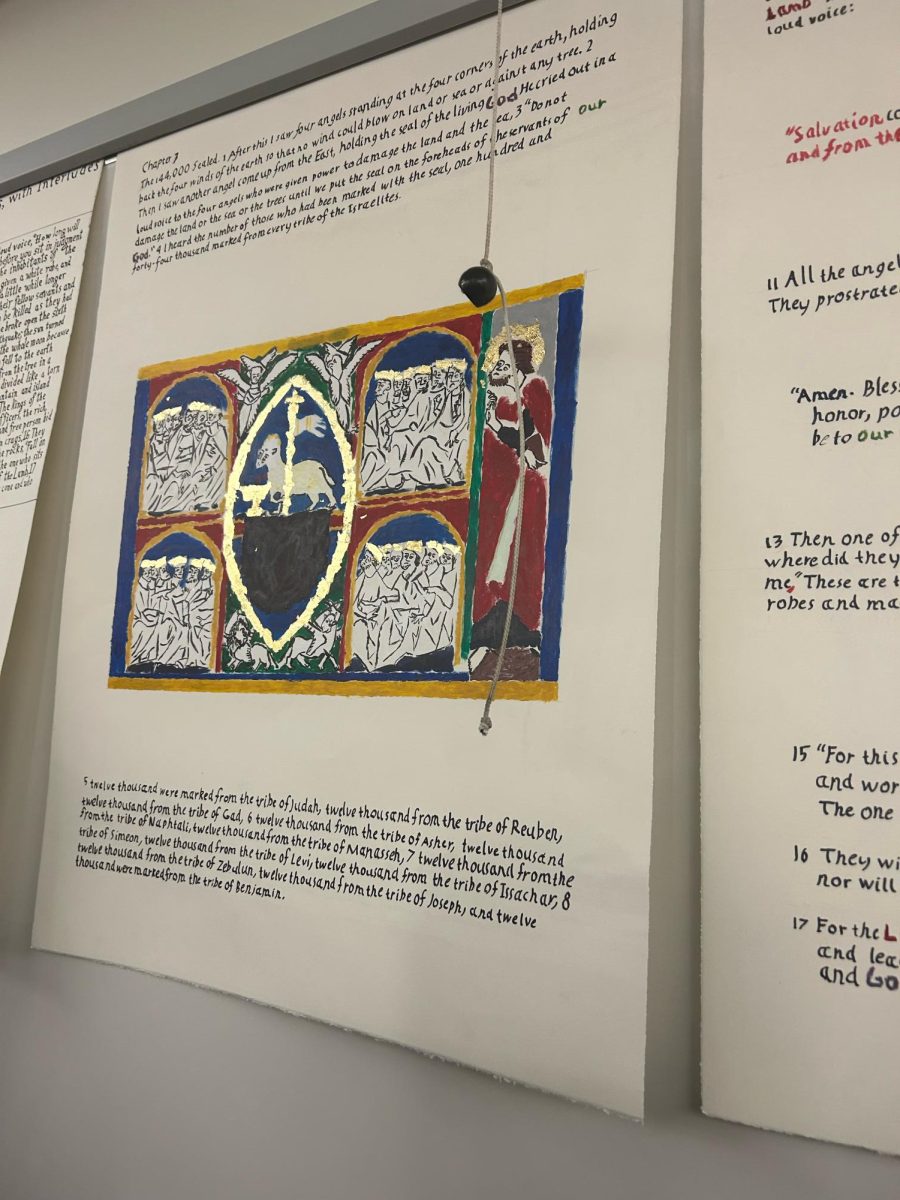On Saturday, Oct. 7, the class of ARCN 246: Archaeological Methods embarked on a field trip to Grand Meadow Chert Quarry Archaeological and Cultural Preserve in Mower County, Minnesota. The site, located northwest of Grand Meadow, is a repository of Grand Meadow Chert, a type of high-quality stone used by ancestors of today’s Dakota-speaking tribes for over 8,000 years. Native Americans in this area had myriad uses for the flint-like stone: it could act as a knife, hide-scraper, awl, spear point or arrowhead. This type of chert comes from 2,000 or so quarry pits, large holes that were dug 400 to 3,000 years ago by Native Americans seeking stone to make tools.
The day-long field trip consisted of a variety of activities. First, the class visited the site’s museum, where they were able to see a timeline of Indigenous history in the surrounding area and some of the stone tools and chert artifacts recovered from the site. They also visited the Mower County Historical Society, which featured the local history of the town of Austin, where these buildings were located. The museum visit was followed by a lecture from lead archaeologist Tom Trow at the Mower County Historical Society. Trow explained the quarry’s unique history, including its significance to Native communities throughout the years. Trow also explained the plans to make the historical site more accessible to the general public. This project will be a collaborative effort between the Mower County Historical Society, the Archaeological Conservancy and the Dakota Indian community at Prairie Island. The goal is to install informational signs and to create trails at the quarry site by 2024 in order to make the site more approachable and comprehensible to future visitors or anyone interested in the quarry’s 8,000-year history. Indeed, the stewards of the site take great care to reach out to many different members of the Mower County community, with an emphasis on local Indigenous groups, as well as farmers, artifact collectors and the general public. According to a group of five students in the Methods course, “it was great to learn how multi-faceted the ways of knowing about the site are, with all of the different groups coming together with their different backgrounds to both preserve the site’s unique history and share it with the public.”
After the lecture and refreshments, the Carleton students made their way to the archaeological site. Currently, the site itself is
[JUMP]
eight acres of undisturbed oak savanna and five acres of restored prairie with scattered trees. Here, Matt Ziebell of the Minnesota Department of Corrections led the students on a tour of the site, focusing on the small woods in the midst of the prairie, which contain 100 of the chert quarry pits. Although the pits were not visible to the naked eye, Matt was able to point out their locations with ease. Other notable landmarks of the site included a “Grandmother” and “Grandfather” tree, two towering oak trees that held spiritual and cultural importance for the Dakota people throughout the centuries.
The tour ended with a group conversation between the Carleton students, Tom Trow and other members of the local community in the form of a gathering circle. Here, the students reflected on their newfound knowledge of the site and asked any remaining questions to Tom concerning the history of the site. The discussion ended with a question from Carleton student Lexi Wallace ’26 about the future of preservation at the site given the possibility of littering or other forms of damaging the site. Tom Trow confidently answered that the strong sense of communal protection of the site, bolstered by a rotating schedule of individual volunteer guards, would prevent these things from happening.
Dr. Sarah Kennedy, instructor of Archaeological Methods, learned about Grand Meadow Chert Quarry from Franky Jackson, an archaeologist and member of the Prairie Island Indian Community. “The site seemed perfect for a field trip because it is only an hour from Northfield and has ongoing projects that Carleton students can participate in, such as helping clear the site from invasive buckthorn to make accessible visitor paths,” Dr. Kennedy says. “I also wanted to take my students to a pre-contact Native American site to broaden their knowledge of human history in Minnesota. The fact that local Indigenous groups were contacted before archaeological excavations and interpretations ever took place was quite unique and an excellent standard of practice that I wanted to instill in my students.”
As for future iterations of the field trip, Dr. Kennedy is hopeful that her future classes will be able to visit the Grand Meadow Chert Quarry, “as long-term collaboration is key to establishing and maintaining solid community relationships. For instance, this past fall, Carleton was invited to become an official site steward and participate in yearly trash pick-ups, site maintenance and public education. In the long-term future, we may collaborate on archaeological investigations.”
Overall, the students of Archaeological Methods had a positive and enriching experience during their field trip to Grand Meadow Chert Quarry and would “highly recommend” visiting the site to other Carleton students and community members.














